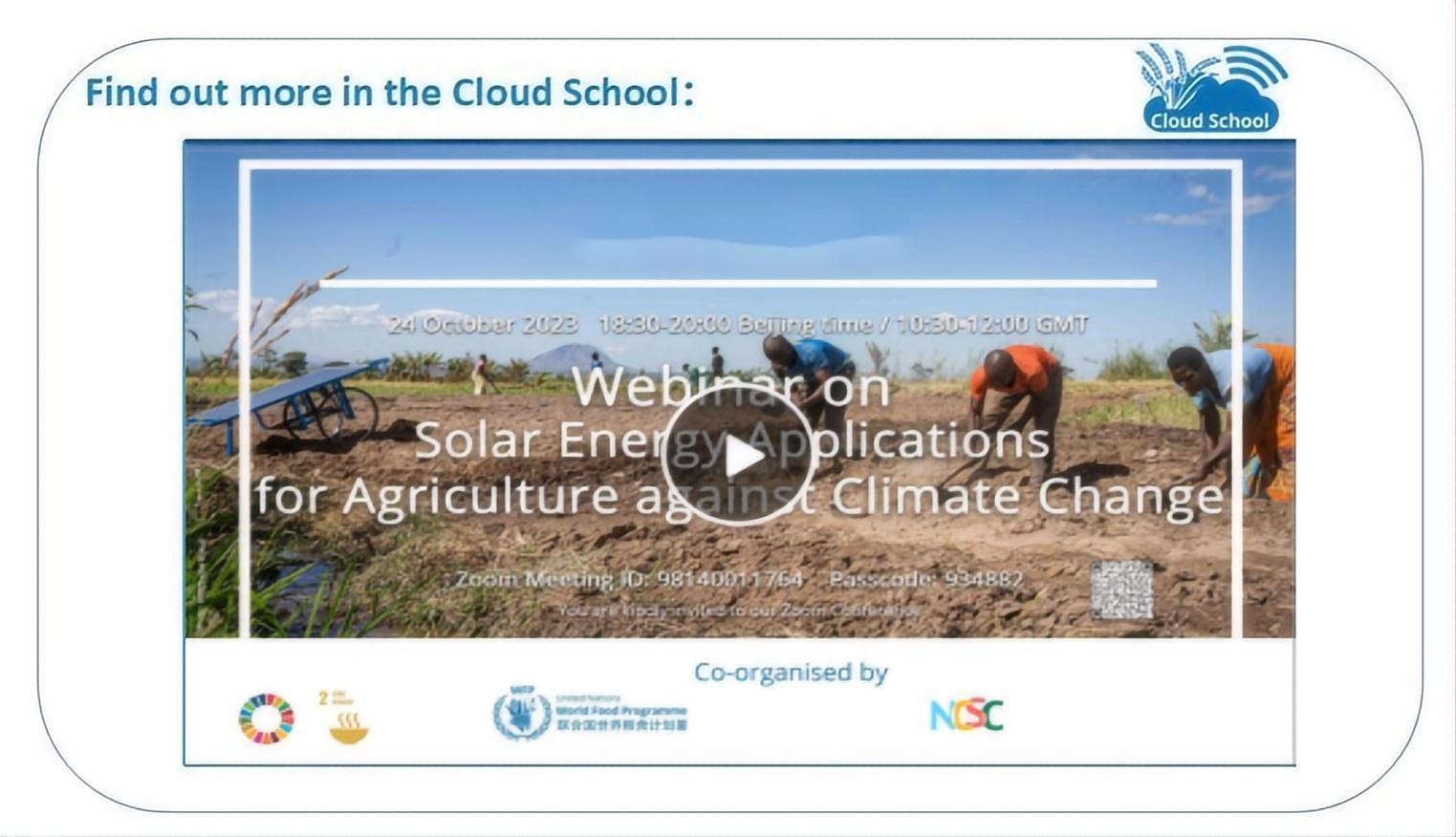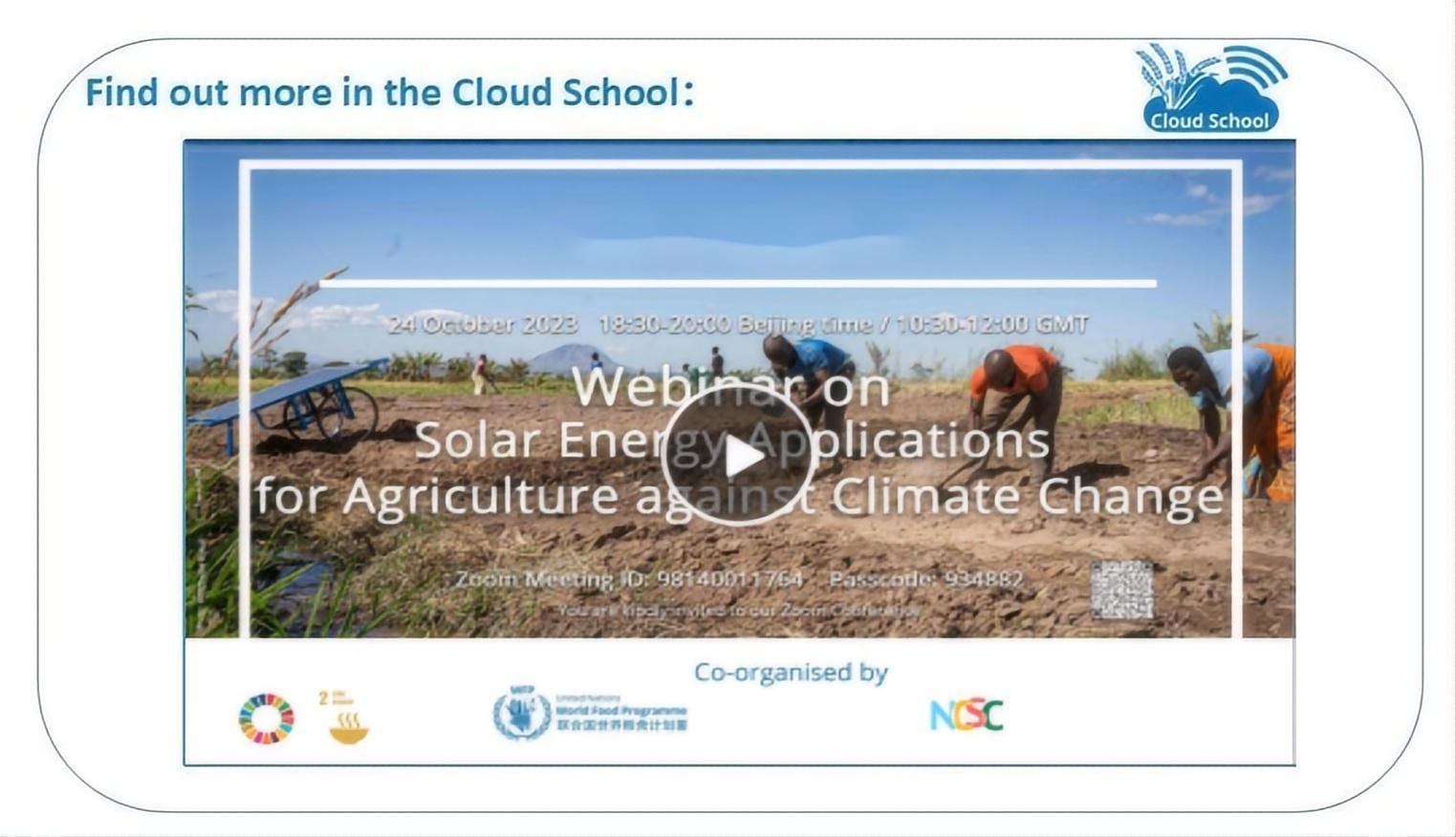Introduction
The climate crisis has joined conflict and economic inequality as a key driver of hunger. Promoting sustainable energy solutions in humanitarian settings, schools and communities could be the effective approach to improve the capability of climate adaptation. The access to renewable energy is also the critical approach of women empowerment against gender inequality. After several years of research and development in renewable energy, solar has emerged as a robust and cheap alternative to fossil fuels to boost agriculture and food production systems.
WFP Centre of Excellence for Rural Transformation (WFP China COE) and National Center for Climate Change Strategy and International Cooperation (NCSC) co-organized a Webinar on Solar Energy Applications for Agriculture against Climate Change to share and exchange experience on solar energy applications in agriculture focusing on technical elaborations to improve the climate change resilience, joined by 49 participants from 25 developing countries. The webinar was moderated by Dr. Jia Yan, Head of South-South Cooperation of WFP China, and Dr. Zhang Zhiqiang, Director of Foreign Cooperation and Exchange Department of NCSC.
The opening remarks and closing remarks were both delivered by Dr. Raffaella Bellanca, Energy for Food Security Advisor of Climate and Disaster Risk Reduction Programmes of WFP Headquarter. She highlighted that innovation and know-how around effective and appropriate solar energy applications can be the source of exchanges through South-South and Triangular Cooperation to contribute to the achievement of SDGs.
Prof. Cao Yang, Expert in Grain Storage, delivered the presentation on control temperature of grain warehouse with intelligent photovoltaic air conditioning system. The presentation provided an overview of increasing demand of green and low-carbon grain storage, introduced the intelligent photovoltaic air conditioning system, including system components, intelligent photovoltaic panel modules, air conditioning design with technical indicators, intelligent controller design with technical indicators, analysed the economic, social, and environmental benefits of the intelligent photovoltaic air conditioning system, and presented some field applications.
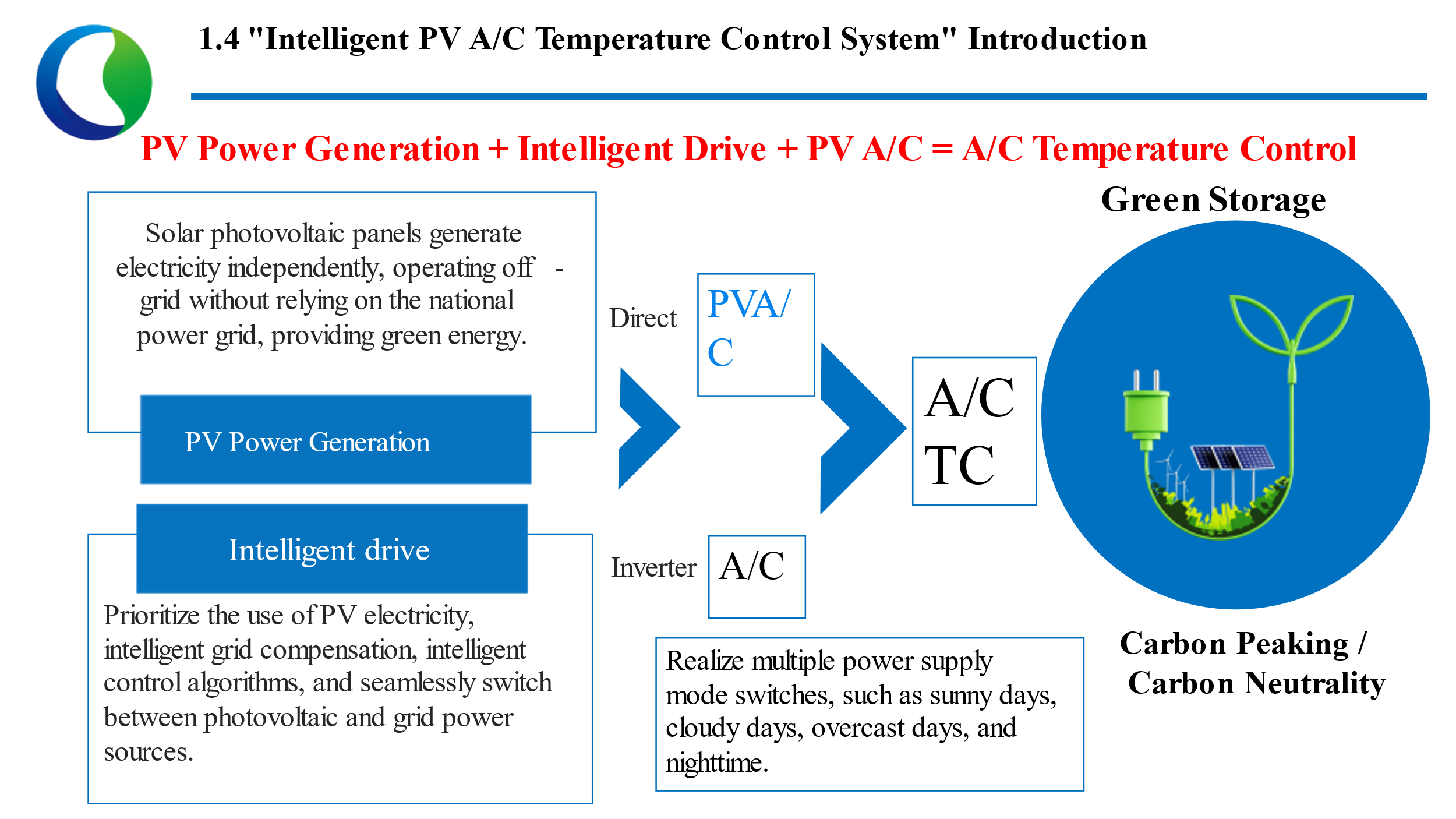
To reduce the energy consumption of air conditioning temperature control in grain storage, it is crucial to make the most of cost-effective and efficient green energy sources. Using solar photovoltaic power to supply electricity for air conditioning temperature control in grain storage holds significant importance in achieving the country's carbon peak and carbon neutrality goals. It also aligns with the enhancement of green grain storage practices and efforts to reduce grain loss.
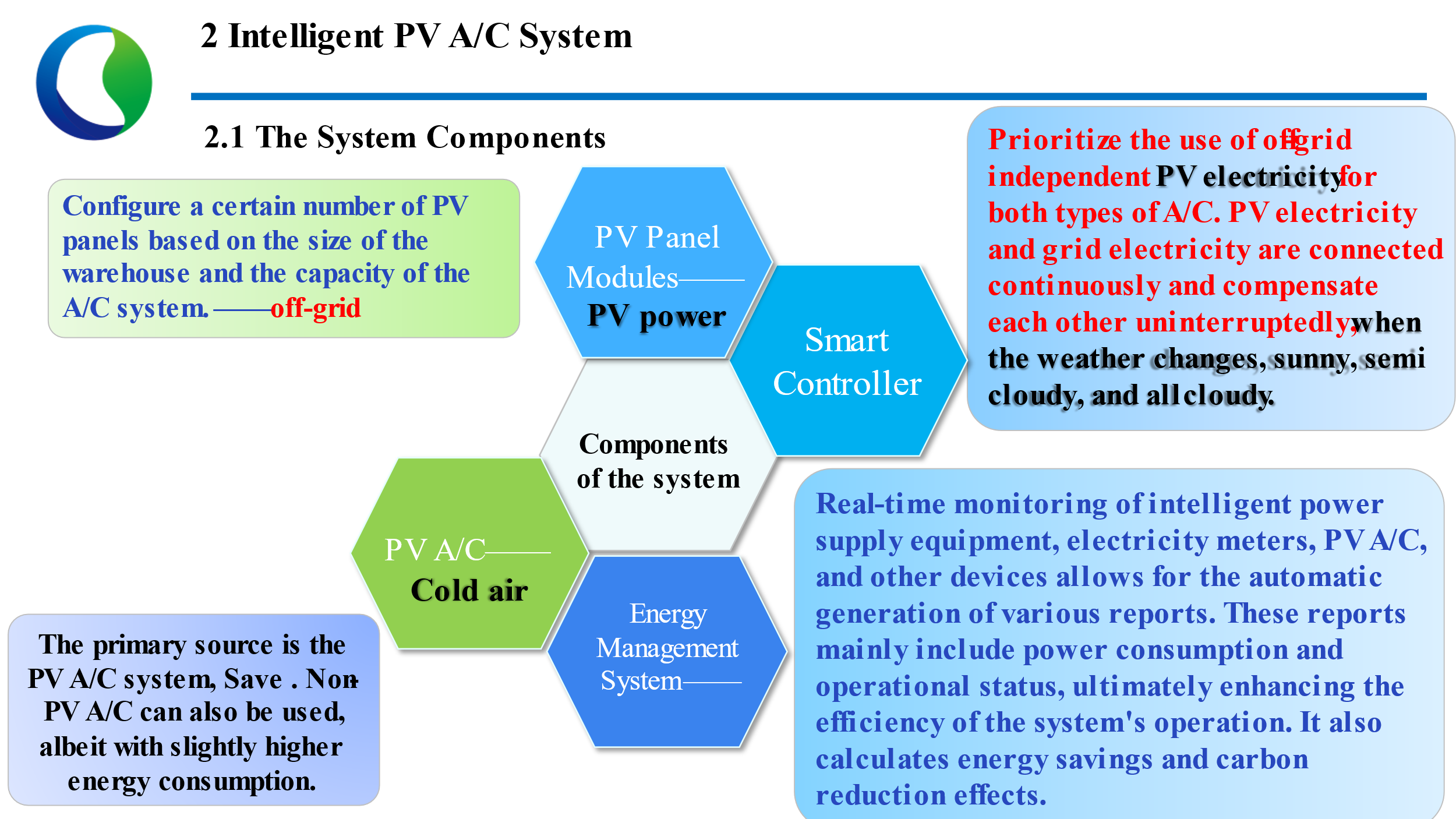
This addresses the issues of high electricity costs for refrigeration and air conditioning, as well as the high initial investment and long return on investment period for photovoltaic power generation. It achieves "zero" electricity consumption or low electricity consumption (from the grid) for low-temperature or semi-low-temperature grain storage, contributing to energy conservation, carbon emissions reduction, and environmental protection.
To access the presentation slides, please click here: Control Temperature of Grain Warehouse with Intelligent Photovoltaic Air Conditioning System
Prof. Wang Hai, Researcher, Academy of Agricultural Planning and Engineering of Ministry of Agriculture and Rural Affairs of P. R. China shared the presentation on green carbon-free solar drying R&D and industrial application of agricultural products technology and equipment. The presentation shared the background of development of the solar energy drying technology. When it is one of the best ways to solve the problem of severe loss of agricultural products, drying is also an energy consuming industry, accounting for approximately 12% of energy consumption. Solar energy is both a primary energy source and a renewable energy source, which is sustainable and can be used for free without transportation and any pollution to the environment. The innovative technology and equipment supporting agricultural product dyring were presented, including multi ventilation dual heat exchange flat solar collector, hybrid solar energy efficient collecting technology, matching and complementing solar energy with other energy sources, solar energy heat storage and release equipment, as well as the equipment standard for solar drying technology. Combining with the above technologies and equipment, forming equipment and facilities, including Hybrid Dual Cycle Solar Energy Agricultural Product Drying Equipment, Productive and Efficient Solar Collector Box Type Agricultural Product Drying Room, and Development of Dual Cycle Solar Drying Equipment are applied. The thrid party evaluation agency confirmed that it is a domestic initiative with an overall international advanced level and some leading technical indicators. The solar drying technology and equipment can be used in agricultural and sideline product drying enterprises such as grains, fruits and vegetables, traditional Chinese medicine, and seafood (shrimp, kelp), especially suitable for small and medium-sized enterprises, farm farmers, etc.
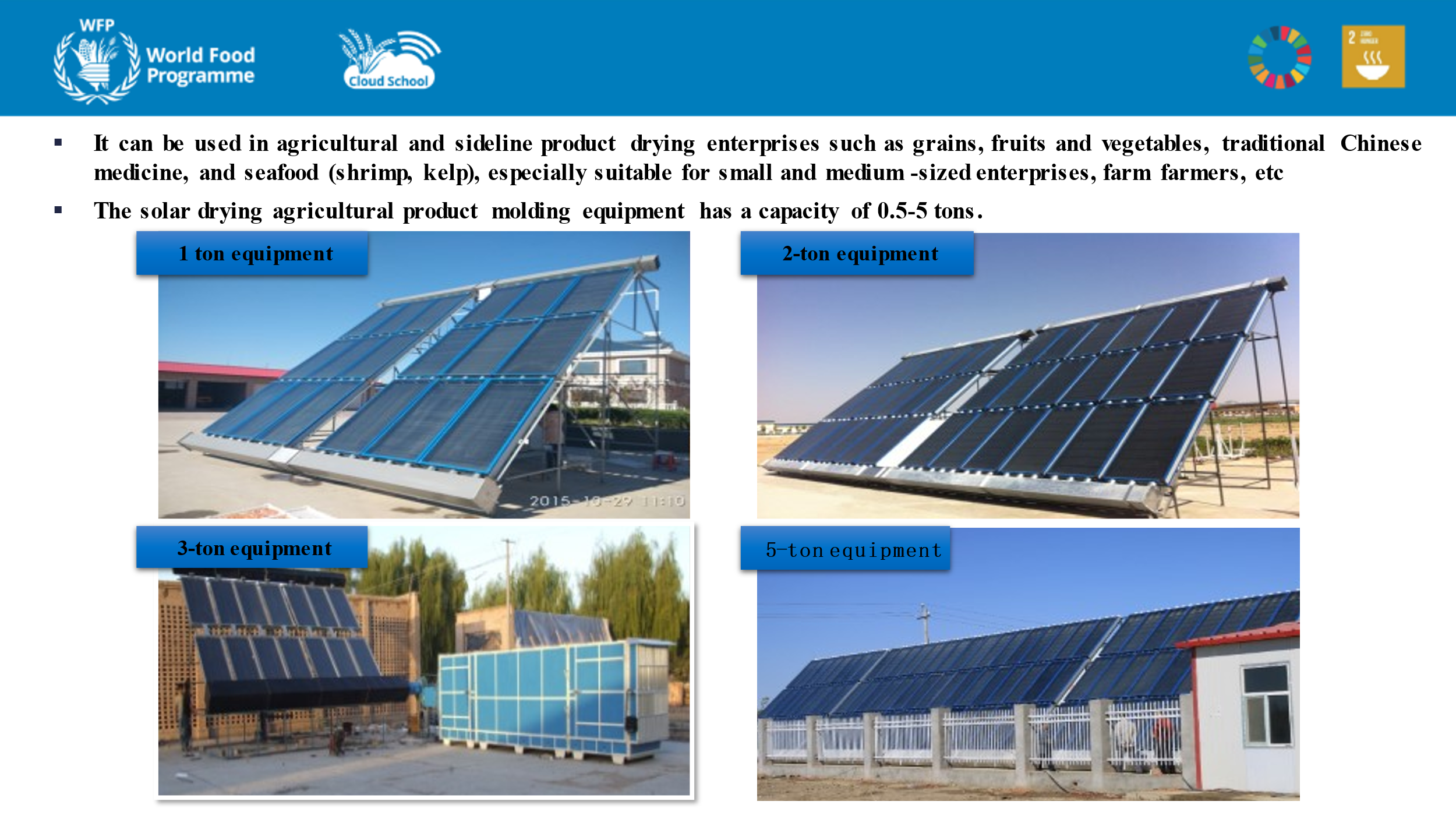
To access the presentation slides, please click here: Green Carbon-free Solar Drying R&D and Industrial Application of Agricultural Products Technology and Equipment
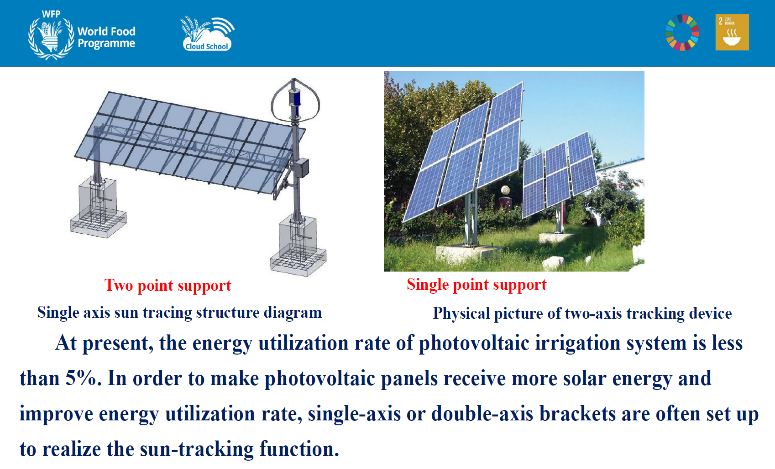
Prof. Zhu Delan from Northwest A&F University delivered the presentation on solar-driven water-saving irrigation equipment. The presentation analysed the background of solar-driven water-saving irrigation. Lacking of electricity in remote areas, the blocked development of water-saving irrigation and serious pollution of diesel pump irrigation system are driving factors of innovative water-saving irrigation equipment. The solar-driven hard hose traveler, as one of improved equipment, is consist of stand-alone PV system, hose reel cart, fertilizing device and traction device. The objective of this new devices is to save energy, optimize truss structure size for decreasing cost and saving driving energy, lower energy consumption for multi-nozzle type and single sprinkler type, achieve automatic starting up, shutdown and walking, and integrate water and fertilizer. The new device is solar-driven instead of water turbine, when inlet water pressure comes down from 0.8 MPa to 0.5 MPa. Its annual cost is decrease by 20%. The speed control system ensures a constant moving speed of sprinklers cart and high irrigation uniformity with intelligent control and automatic monitoring. The solar-driven traction device, which aims to instead of farm tractor to avoid harm of crops and save diesel oil and labor, can control moving speed with the adjustable moving speed (0-15m/min) control device, monitoring solar electric charge and steel wire in twined uniformity. There is also a boosting-traction-fertilization equipment with traction of gun cart, water pressure booster, fertilizer injection and traction of hose reel cart, which is applicable for integration on water and fertilizer in any pressurized pipe irrigation.
The second new device is the solar-driven canal feeding lateral move sprinkler with GPS navigation, pecision irrigation, truss structural optimization and low pressure sprinkler nozzle. The device composed by PV system, body frame, canal, pump, filter, navigation system, uses canal to transports water instead of reel cart and decreases water head friction loss. Pumping head is reduced to less than 0.2 MPa, totally solar powered, intellectual control and low cost. Another new device is the photovoltaic sun-tracking device with physical design, entity construction and performance verification. Those improved solar-driven equipment and devices have been applied in Shanxi, Ningxia, Inner Mongolia, as well as Uzbekistan. The research in this field will continue to focus on power requirement analysis, energy consumption optimization and intelligent control.
To access the presentation slides, please click here: A Study on Solar-driven Water-saving Irrigation Equipment
Related Link: Webinar on Solar Energy Applications for Agriculture against Climate Change
Related Courses in Cloud School
English Version
French Version

